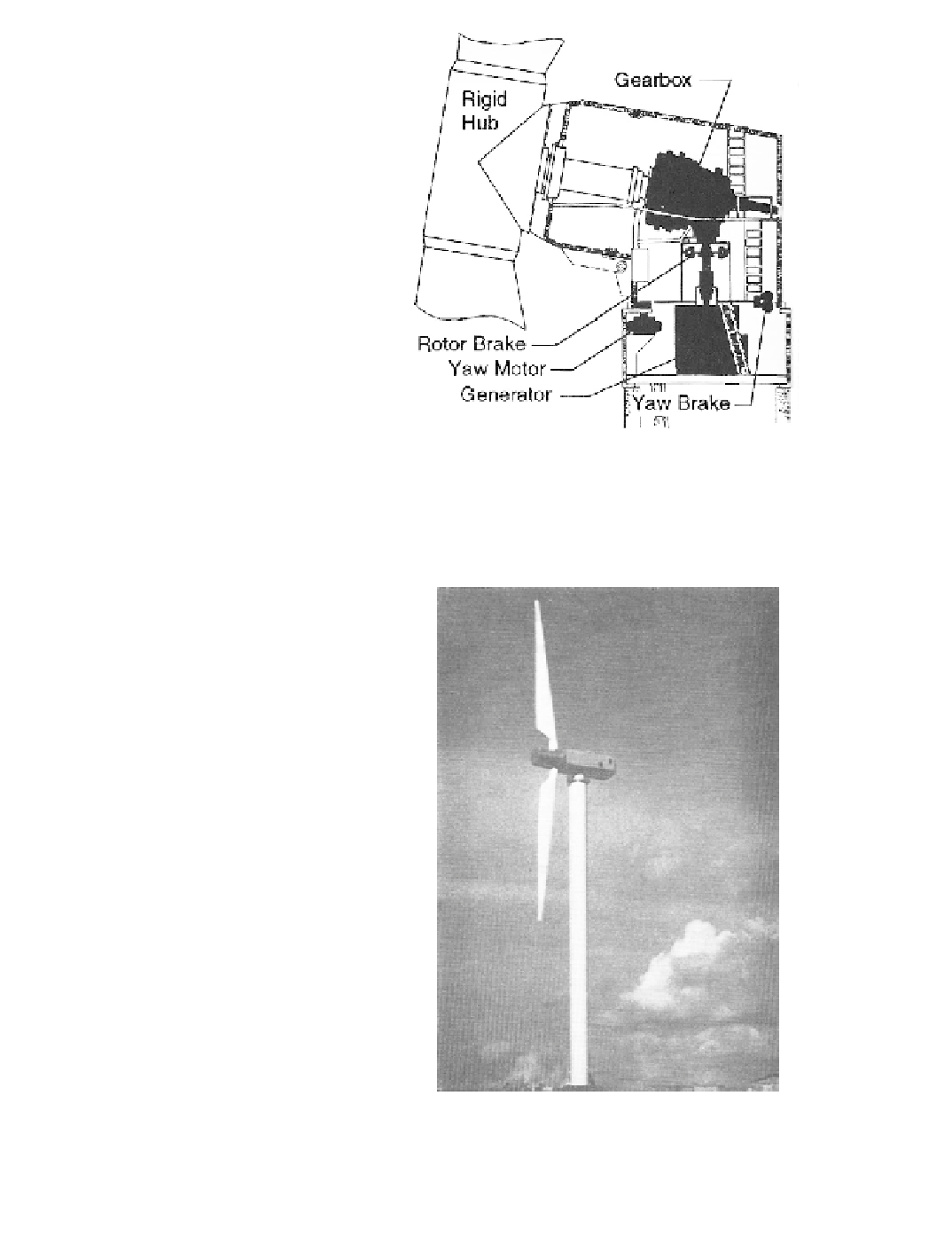Environmental Engineering Reference
In-Depth Information
Sweden
Sweden proceeded rapidly
into a large-scale turbine research
program, after irst experimenting
with the
SAAB-Scania 100-kW
HAWT
, which was tested near
Uppsala. A Swedish consortium
named
KaMeWa
developed a 2.5-
MW, 75-m diameter turbine with
two blades on a rigid hub upwind
of the tower, and installed it at
Nasudden on the island of Gotland.
The
KaMeWa HAWT
contained two
unusual features: As shown in
Figure 3-33, the last stage of the
gearbox utilized bevel gears to
drive its generator. This component
was mounted vertically in the tower
just below the nacelle, thus elim-
inating the need for power slip-
rings. A second unusual feature
was a carriage assembly mounted
on vertical rails on the side of the
concrete cylindrical tower, for
raising or lowering all major com-
ponents (including the nacelle with
rotor blades mounted). This elimi-
nated the need for a large crane
during construction or maintenance.
The second Swedish turbine
was designed as a joint venture
between Karlskronavarvet (KKRV)
in Sweden and
Hamilton Standard
in the U.S. Called the
WTS-3
, it
was built at Maglarp, near Malmo
in southern Sweden (Fig. 3-34).
Although more conventional than
the KaMeWA design, the 3-MW
WTS-3 was nonetheless techno-
logically advanced. It had a tall,
“soft-soft” tower and a two-bladed,
teetered, downwind rotor 78-m in
diameter. Its gearbox was mounted
on springs to absorb dynamic
torques. The iberglass blades of
the WTS-3 were designed by
engineers at Hamilton-Standard
and fabricated on a specially-built
and automated ilament-winding
machine.
Figure 3-33. The unique drive train in the
2.5-MW KaMeWa HAWT eliminated sliprings
to carry power from the generator. (
Courtesy of
the National Energy Administration, Sweden
)
Figure 3-34. The 3-MW WTS-3 HAWT near
Maglarp, Sweden.
(
Courtesy of Hamilton Standard
)

Search WWH ::

Custom Search